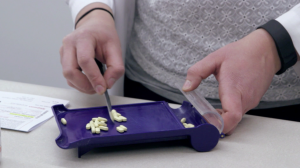NEW YORK (Reuters Health) — Transcervical Foley catheter is just as effective for inducing vaginal labor as intravaginal misoprostol, but carries less risk of tachysystole, according to a new meta-analysis published in BJOG: An International Journal of Obstetrics and Gynecology.
However, it’s too early to know for sure what women may be affected by the increased risk of tachysystole, and how important that risk is, said Dr. Nathan Fox, the lead author of the study from Maternal Fetal Medicine Associates in New York City.
“What we were able to show is that basically they have similar effectiveness,” Dr. Fox told Reuters Health, “so there’s no tremendous advantage to using one over the other. People really have options.”
The review included nine prospective, randomized studies published between 2001 and 2010 comparing the two methods for cervical ripening prior to labor induction and including a total of 1,603 patients. In each of the studies, patients did not receive any additional induction agents at the same time as Foley or intravaginal misoprostol. Studies compared the time to delivery, rate of caesarean delivery, and rates of chorioamnionitis and tachysystole between the two procedures.
There was no difference between the two procedures in time to delivery (misoprostol 1.08 hours shorter; P = 0.2348) or rate of caesarean delivery (RR 0.991; 95% CI 0.768-1.278) between misoprostol and the Foley catheter. There was also no difference in the rate of chorioamnionitis (RR 1.130; 95% CI 0.611-2.089), although this was only measured in two studies.
Patients given misoprostol, however, had significantly higher rates of tachysystole than those induced via the Foley catheter (RR 2.844; 95% CI 1.392-5.812), measured by eight studies. Seven of those studies defined tachysystole as six or more contractions in 10 minutes over two consecutive 1 minute intervals; the other defined it as more than five contractions in a 10-minute period when the patient required intravenous administration of terbutaline.
“Although these studies did not report any adverse maternal or neonatal outcomes in association with tachysystole,” the authors write, “this should prompt caution when using misoprostol compared with transcervical Foley for induction of labor.”
The findings may be particularly useful for treatment of patients that are at an increased risk for hypoxaemia, the authors note, such as those with intra-uterine growth restriction, chronic disease, or pre-eclampsia.
They also note the evidence that higher doses of misoprostol, used by three of the studies included in the review, have been associated with an increased risk of tachysystole. Another recent study in Obstetrics & Gynecology found that women receiving a higher dose of misoprostol – those that got the misoprostol vaginal insert 200, versus the MVI 100 – had a significantly shorter time to vaginal delivery, though there was not a significant difference in the proportion that delivered vaginally within 24 hours.
The authors write that they believe misoprostol remains an appropriate agent to induce labor, as long as it is used correctly.
“At this point I wouldn’t say that our findings of the different rates of tachysystole should cause people to only use the Foley, but it’s certainly something that should be looked at further,” Dr. Fox said. “There is definitely more work that needs to be done as to whether this difference in tachysystole is clinically significant or not.”
BJOG: An International Journal of Obstetrics and Gynecology, online February 18, 2011.




